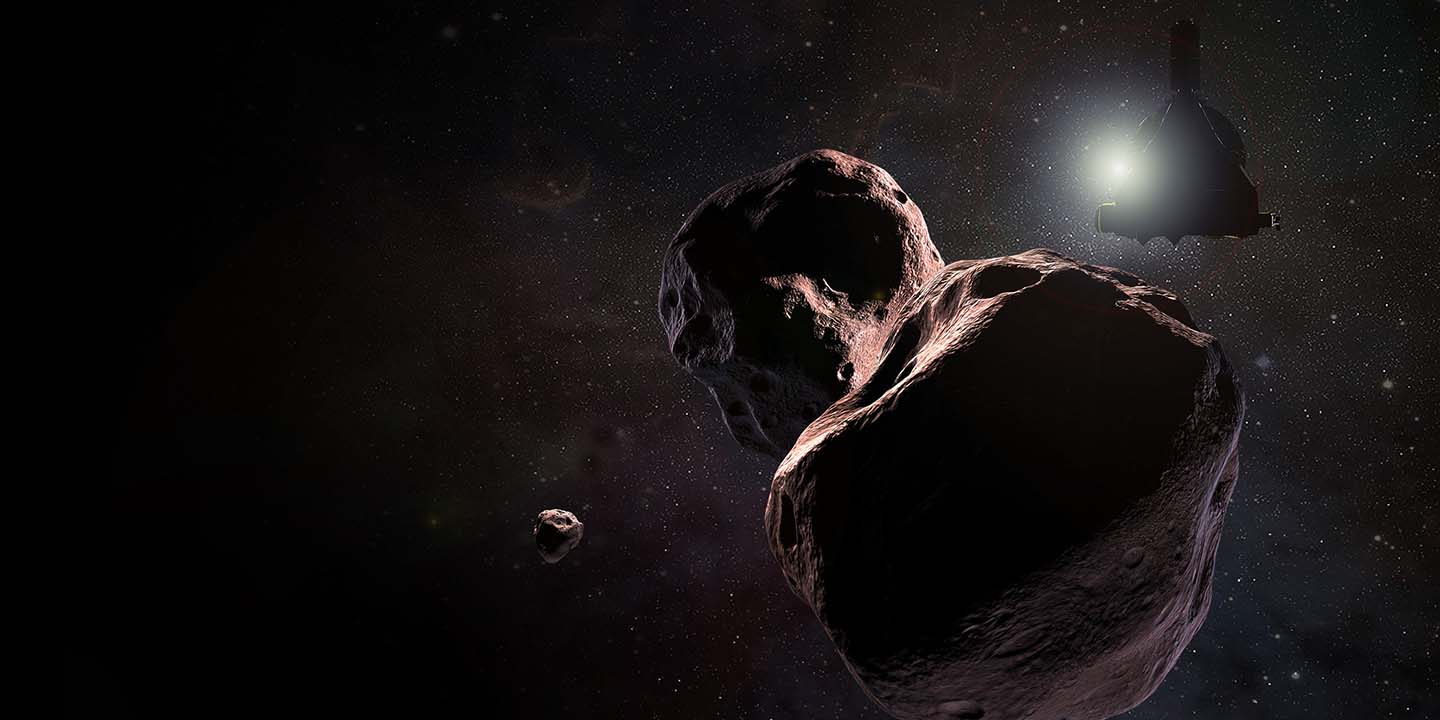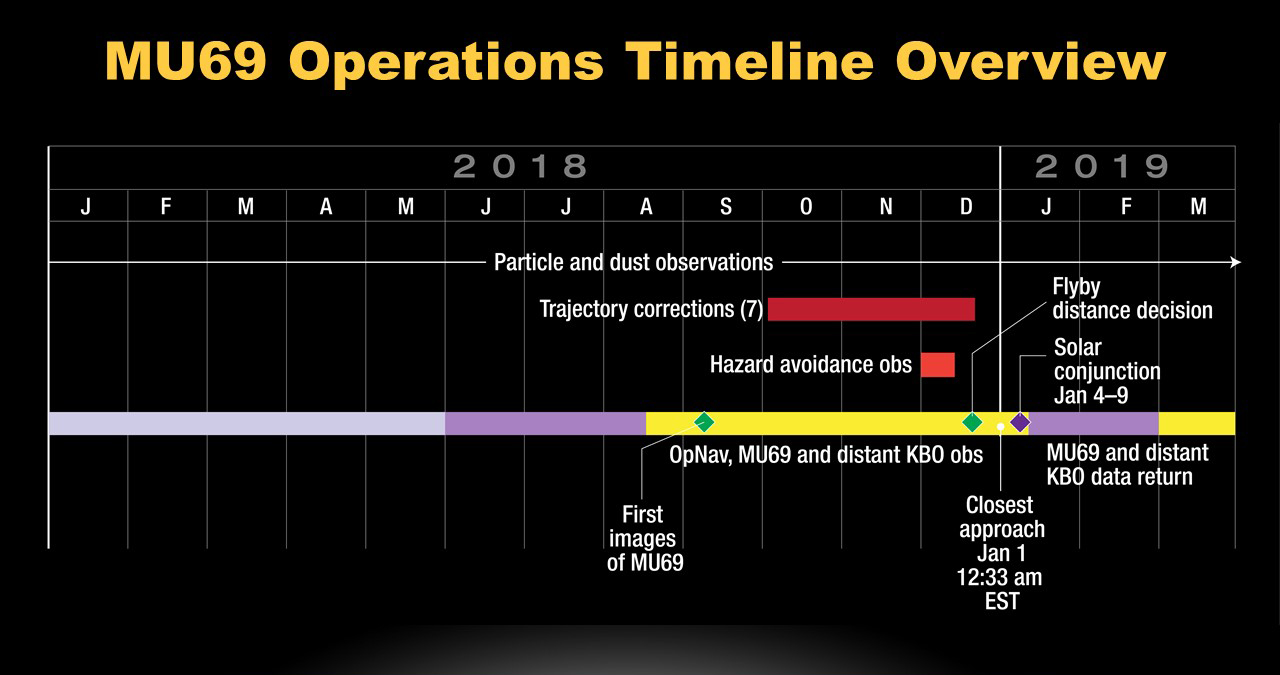Press Release
APL Plans Next New Year’s Eve: In the Kuiper Belt, with New Horizons
The New Year’s celebration to usher in 2019 will include an event like no other — one more than four billion miles from Earth.
In just under a year — shortly after midnight Eastern Time on Jan. 1, 2019 — NASA’s New Horizons spacecraft, built and operated by the Johns Hopkins University Applied Physics Laboratory in Laurel, Maryland, will buzz by the most primitive and most distant object ever explored. New Horizons’ encounter with Kuiper Belt object 2014 MU69, which orbits a billion miles beyond Pluto, will offer the first close-up look at such a pristine building block of the solar system — and will be performed in a region of deep space that was practically unknown just a generation ago.
“The Voyagers and Pioneers flew through the Kuiper Belt at a time when we didn’t know this region existed,” said Jim Green, director of NASA’s Planetary Science Division at Headquarters in Washington. “New Horizons is on the hunt to understand these objects, and we invite everyone to ring in the next year with the excitement of exploring the unknown.”
“Our flyby of MU69 on New Year’s Eve and New Year’s Day 2019 will be an exciting sequel to the historic exploration New Horizons performed at Pluto in 2015,” added Alan Stern, New Horizons principal investigator from Southwest Research Institute (SwRI) in Boulder, Colorado. “Nothing even like MU69 has ever been explored before.”
As with the hundreds of thousands of other small worlds in this zone of icy bodies, MU69 is shrouded in mystery. In fact, all we know about it has come from the Hubble Space Telescope (used to discover the object in 2014) and a comprehensive observation campaign last summer, in which the New Horizons team gathered data on MU69 as it passed in front of three stars. Those observations indicated that MU69 could be two objects, perhaps accompanied by a moon.
“That tells us this object is going to have a lot of surprises in store for New Horizons,” said Marc Buie, the New Horizons science team member from SwRI who led the observation campaign. “We’re going to see something that dates back to the formation of the solar system.”

